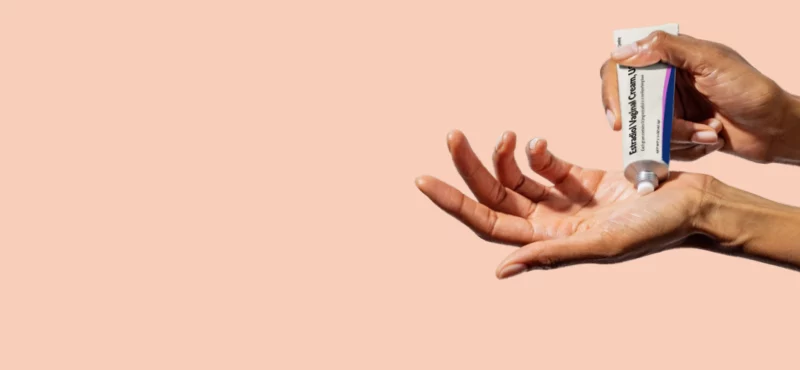Have you ever walked away from a doctor’s visit with more questions than answers? As a 41-year-old woman who has built two telemedicine companies, I know there’s a reason for this. It’s not you. It’s healthcare. Women’s health is under-researched, underfunded, misunderstood, and lacking in specialists.
A significant turning point came in 1993 when clinical trials were finally required to include women. However, we have not yet closed the gaps in healthcare that exist for women.
The Menopause Gap
Menopause is a real, physical, and biological event experienced by women across every culture and background. It is not a mere psychological or individualized issue. Symptoms can begin in your 30s or 40s in the perimenopause years, and can disrupt your work life, intimate life, everyday comfort, and overall health.
Although menopause is a one-time event, the loss of estrogen affects women and their health for the rest of their lives. 90 million women in the United States are expected to be postmenopausal by 2060. These women will spend about 1/3 of their life in menopause.
Despite the huge need for menopause care, only 31% of OBGYN training programs offer formal menopause education (1). That means nearly 70% of OBGYNs are not receiving training on how to support women in menopause.
This gap in menopause training leads to an absence of proper care. As a result, many women will feel their symptoms are dismissed as normal, natural, or psychological.
The Vaginal Health Gap
Hormonal changes throughout a woman’s life affect the vaginal environment from birth to post-menopause.
Up to 85% of post-menopausal women will experience vaginal atrophy (VA) or the genitourinary syndrome of menopause (GSM) (2). Symptoms include vaginal dryness, pain with sex, frequent infections, and incontinence. And, just like all menopause symptoms, GSM can start in your 30s or 40s in the perimenopause years. GSM is chronic and progressive, meaning symptoms don’t magically go away on their own and may get worse with time.
As if vaginal discomfort weren't enough, GSM can also raise a woman's risk of vaginal infection. Interestingly, a small study of 220 women showed that vaginal infections are misdiagnosed 61% to 77% of the time. Only 12 of the women in the study were post-menopausal (3).
No matter how you look at it, more research and care is needed. Many women with vaginal infections may be receiving the wrong diagnosis or treatment, and this can lead to recurrent symptoms.
For example, declining estrogen levels can disrupt the vaginal microbiome and cause symptoms that seem like bacterial vaginosis (BV). For many women with GSM, the best treatment to promote a healthy vaginal microbiome is vaginal estrogen - instead of antibiotics for BV (2).
The Urinary Health Gap
To return to the issue of the genitourinary syndrome of menopause (GSM) and urinary tract infections (UTIs) in particular, up to 15% of post-menopausal women experience frequent UTIs (4).
For many post-menopausal women, these UTIs are not only treatable, they are preventable. Yet postmenopausal women with GSM may show up at the emergency room with UTI symptoms, complete a course of prescribed antibiotics for UTI symptoms, and come back a few weeks later with recurring GSM symptoms.
What if more providers understood that recurrent UTIs commonly affect postmenopausal women, and are a component of GSM? Perhaps we would see fewer providers offering antibiotics, and more providers prescribing preventative treatments like vaginal estrogen. In a recent study, 68% of post-menopausal women with recurrent UTIs did not need additional therapy after receiving vaginal estrogen (5).
The Information Gap
For women experiencing GSM, effective treatment options are available. But there’s an information gap that prevents women from getting the care they need. Healthcare providers initiate a conversation about GSM only 13% of the time (6).
The gap widens because of the way we talk about GSM. “The genitourinary syndrome of menopause” is a relatively new term for what is still medically known as “vaginal atrophy.” While it’s true that the vaginal skin becomes thin and dry, that’s not all that happens. By focusing on the vagina, women (and medical providers) may not realize that incontinence and frequent UTIs are also related to menopause. This could lead to a woman getting treatment that might correspond with her urinary symptoms, but that does not address the underlying hormonal changes.
Even if a woman is fortunate enough to have access to a medical provider who understands the importance and safety of hormone-based treatment for GSM, the information she receives from her provider may differ from the information she reads in the safety leaflet that comes with the medication. As a result, many women are needlessly frightened, and leave the medication unopened and unused in the bathroom drawer.
Vaginal estrogen is safe and effective preventative care, but less than 10% of women will receive it (7). This means 90% of women with GSM are dealing with pain, avoiding everyday activities, or searching for over-the-counter treatments that might be ineffective and even harmful. Research shows this gap is due to a misunderstanding of treatment options and poor communication between patients and medical providers (6).
Conclusion
The history of ignoring women's bodies in medicine has had profound implications for women's health, resulting in persistent gaps that continue to affect women today.
The medical system can be built to serve women and their unique needs in perimenopause, menopause, and what comes after. Women should be proactive about their health, advocate for the care they deserve, and seek out evidence-based resources. As the medical system evolves and recognizes the unique healthcare needs of women, we can look forward to a future where gender disparities in healthcare become a thing of the past.
Next steps
At Interlude, women can access a board-certified doctor and prescription treatment for GSM. By operating as a virtual care clinic, we can help more women get the care they need. We’re available online in all 50 states.



